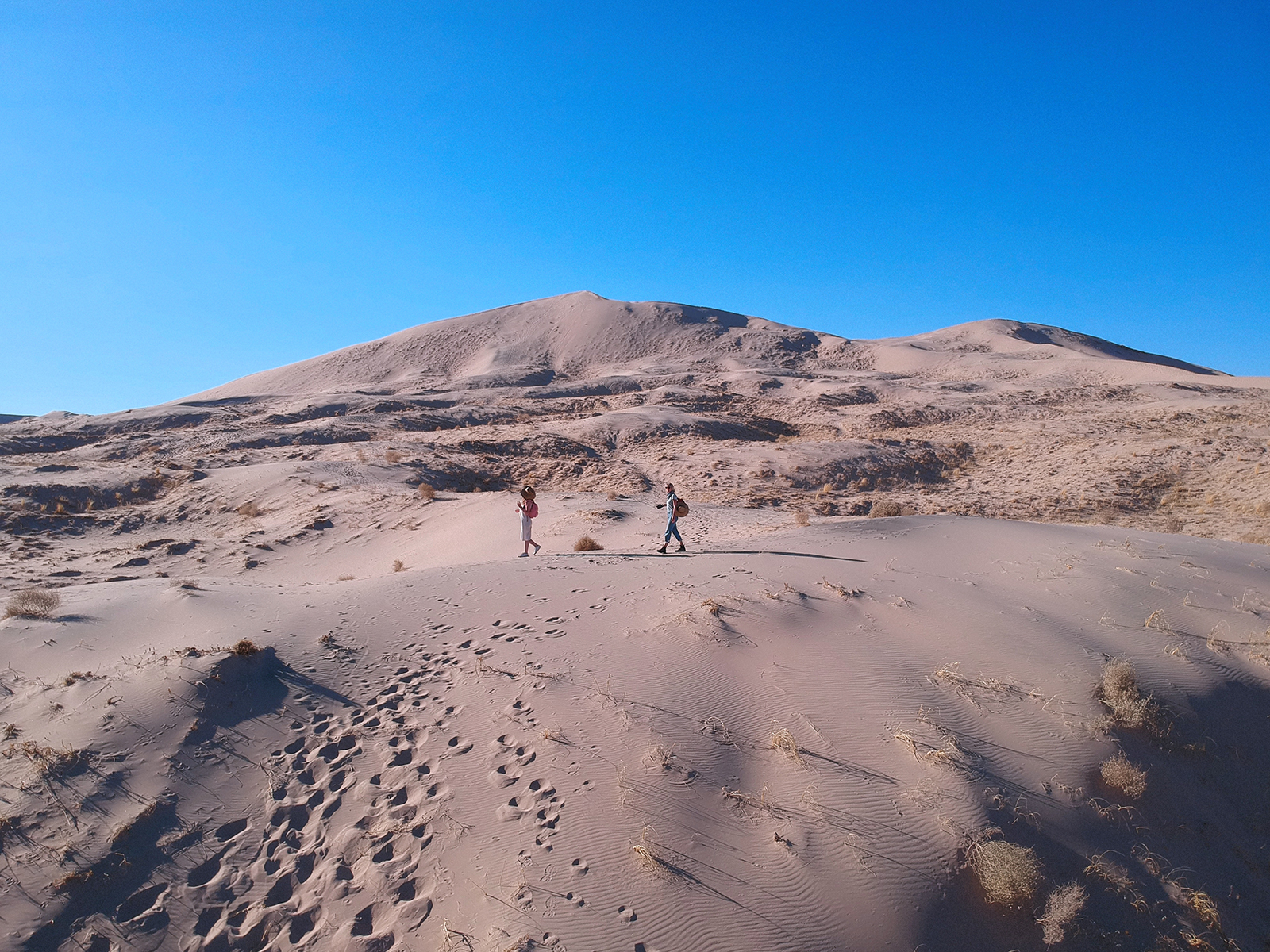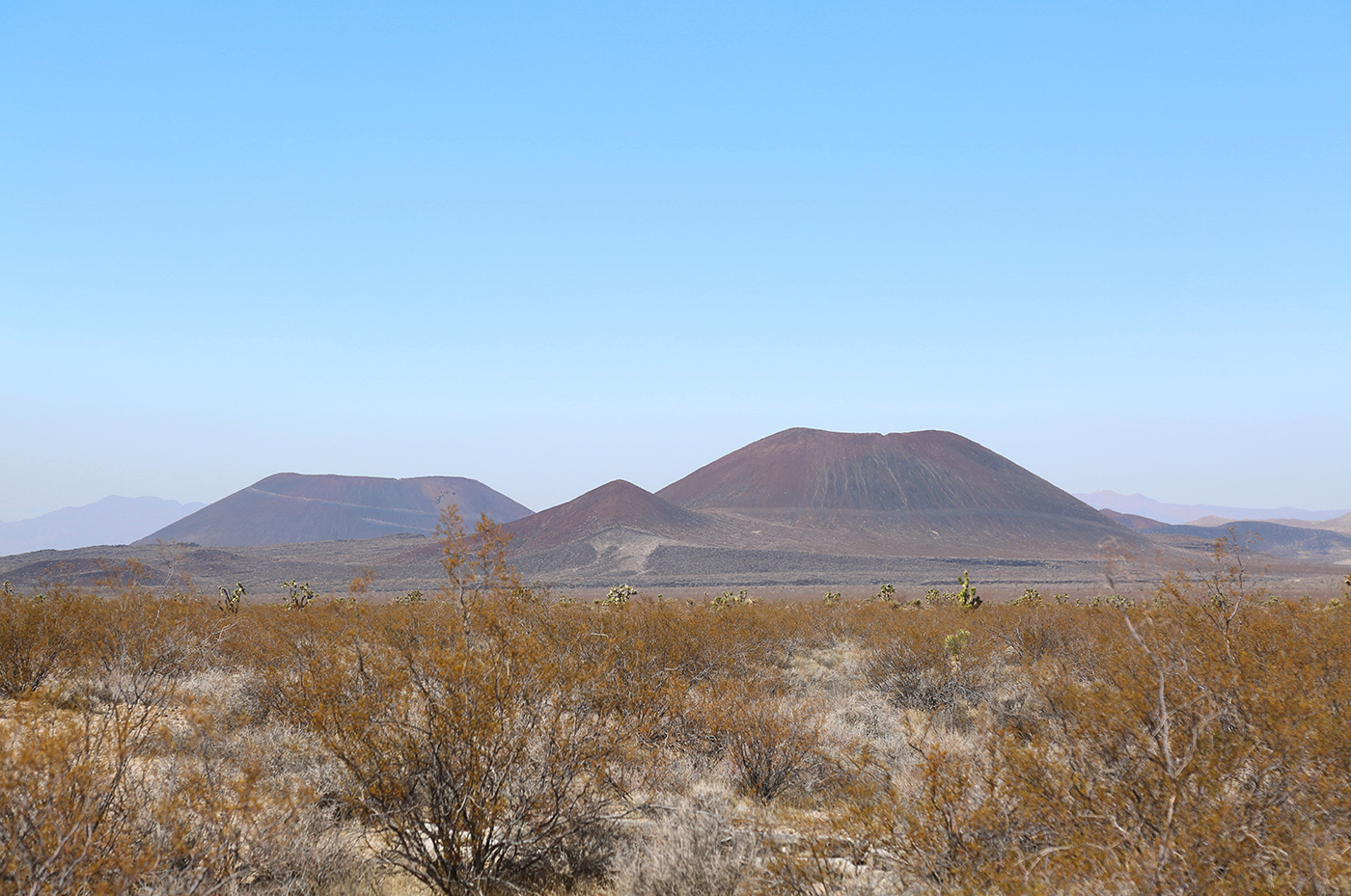In my short experience here, I’ve found that desert dwellers tend to be a self-selecting crowd: to live here, you have to be okay with a little bit of grit, and even more okay with solitude.
Living in Joshua Tree has its fair share of grit, but not so much solitude these days – with a National Park nearby and a pandemic that dictates that all activities we do must be outside – the crowds are simply overwhelming, especially when camping opened back up. On weekends, the small town’s population swells, the (outdoor) restaurants fill up for hours-long-waits, and you can absolutely forget about finding a trail without tons of people.
And so I began to look beyond Joshua Tree for the desert solitude I desired when I moved here.
Enter, the Mojave National Preserve.
The Mojave National Preserve feels truly wild, with dramatic landscapes and very few signs of human life. Yes, it’s close to Las Vegas – about an hour drive – but you may surmise, as I did, that most Vegas tourists aren’t there for its scenic hikes or solitude. The next nearest city is Twentynine Palms, the easternmost city connected to Joshua Tree National Park – which does a great job absorbing the LA crowd. The distance from cities and general lack of services in the Mojave Preserve area – few places to eat and even less lodging – means a safe bet if you’re seeking adventure and isolation.
North of Joshua Tree, and south of Death Valley, the Mojave National Preserve resembles a bit of both deserts. Towering sand dunes, cinder cone volcanoes, and carpets of wildflowers in spring are all found within the 1.6-million-acre park. It also includes the densest Joshua Tree forest in the world – or it did, before the Cima Dome Fire in 2020. Now, the charred remains of Joshua Trees create an eerie, totally other-worldly experience for those willing to make the journey.

This is my third visit here: for the Lava Tubes and the Kelso Sand Dunes. My friend Abby and I set off from Joshua Tree in the morning, heading straight to the Lava Tubes, knowing it would be the quicker of the two “hikes.” A short walk from the parking lot, hikers descend down stairs into a dark cave (bring a flashlight or headlamp if you can). From there, duck down and follow the light (you’ll need to crawl for a short distance on your hands and knees) before entering the Lava Tube. It’s incredibly photogenic.

Forty minutes away, the Kelso Sand Dunes are maybe the most popular spot in the Mojave National Preserve. There’s no specific trail here; you just pack up and go. Bring more water than you think you need, and be prepared for a long walk if you’re heading to the summit, which appears to be further and further away the longer you hike toward it.
Once you’ve finally reached the top, running or sledding down the dunes is super fun. Be warned: if you plan on sledding (or skating/surfing down) you’ll need to wax to “go”; also, as you’ll note on your way up the dunes, they’re way steeper than they look and therefore a bit dangerous. Don’t do this alone, but do have fun with it!
We planned the day to end with a stop at Roy’s Route 66, a landmark Route 66 motel and gas station. It’s slowly being fixed up (current estimate is about 3-5 years for project completion) – go in and buy a t-shirt or grab a snack and show this place some love. Off in the distance, the sun sets over the Amboy Crater – another other-worldly Mojave Desert adventure.
Speaking of, for more Mojave adventures, check out the Escape LA Trip to the Amboy Crater and Cadiz Sand Dunes.
















